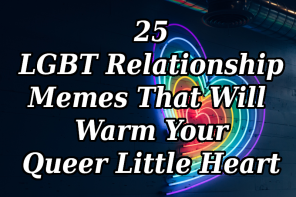When discussion turns to marriage for the LGBT community, it often comes down to an issue of semantics. Many critics of the marriage equality movement insist they have no problem with the idea of LGBT couples getting married per se … they just wish we wouldn’t call it ‘marriage’. Call it a union, they say, call it anything … just not a marriage. Then they usually ring up civil unions, which were originally drafted in a handful of states in order to give some recognition to same sex couples around the year 2000. Few people know about civil unions today but thanks to recent Supreme Court decisions, discussions about how the country will deal with marriage equality have brought the issue back to the front lines.
Simply put, civil unions – sometimes also called domestic partnerships – are essentially the first generation of marriage quality for the LGBT community. Civil unions exist in a number of countries around the world, including Canada, Brazil, New Zealand and the United Kingdom and they vary widely from one to the next. But, in each of these countries, these unions exist as a separate – but reportedly equal – mirror to traditional marriage.
Civil Unions – What They Cover and What They Don’t
Civil unions were originally written to act as a way for LGBT couples to join together as a family unit without dealing with the larger issues of marriage across the board. In fact, many of the countries who were the first to enact civil unions as a way to recognize LGBT couples have now moved on to fully accept and integrate marriage equality into their national laws. Countries like Brazil, Canada, France, the Netherlands, Portugal, South Africa, Sweden and the United Kingdom all now have equal rights and access to marriage for all couples regardless of their sexual orientation. In many states across the United States, however, lawmakers are poised to come down hard on same sex marriages as they await another decision from the Supreme Court, which is why the idea of civil unions has received new interest and popularity.
For civil unions in the United States, for example, there is no way to transfer federal rights or benefits from one partner to another or to any children. This means that if two gay men have a civil union and one is in the military, his benefits would not transfer to his partner in the event of his death. Since the unions are not recognized on a federal level, there are fewer tax benefits, insurance provisions and other legal benefits available to the couple.
Civil Unions also don’t cover the emotional and familial connection that the term marriage does and this, for many, is where the real problem lies. Telling someone you’re in a civil union makes it sound as though the relationship is little more than a business venture – something you’ve decided to do as a fun experiment in speculative marketing. A marriage, meanwhile, has a deeper and more emotional meaning both culturally and socially.
Separate But Equal … Because it Worked So Well the Last Time
Which brings us back to semantics. At the end of the day, people who claim to support ‘traditional marriage’ insist that a civil union is the perfect solution – it’s the same thing, just a different name. If this sounds at all familiar that’s because it ticks a lot of the same boxes used during the ‘Separate But Equal’ movement of the early 1900s. This legal approach had been the law of the land in Louisiana for years but received national attention during the Plessy v. Ferguson trial of 1896 in which a man, Homer Plessy, had purchased a First Class train ticket but was not permitted to use it as the only First Class train car was ‘Whites Only’. The final decision came down that Plessy should have been able to use the ticket but not that he should have been able to sit in that particular car. Instead, the train company had to include a ‘separate but equal’ car for black passengers. When the decision was handed down in 1896, it spurred several other states to enact similar laws, a practice which was held up until the infamous 1954 case Brown vs. the Board of Education.
While we usually think of the days of segregation being far behind us, the renewed interest in civil unions has forced many to notice disturbing parallels. The entire premise of establishing a civil union which is meant to mirror a civil marriage is, in itself, the very definition of separate but equal. At the end of the day, there is a chasm of difference between a civil union and a marriage, both in name and meaning. For there to ever be true marriage equality for every person, there can’t be separate designations – a marriage is a marriage, plain and simple.





